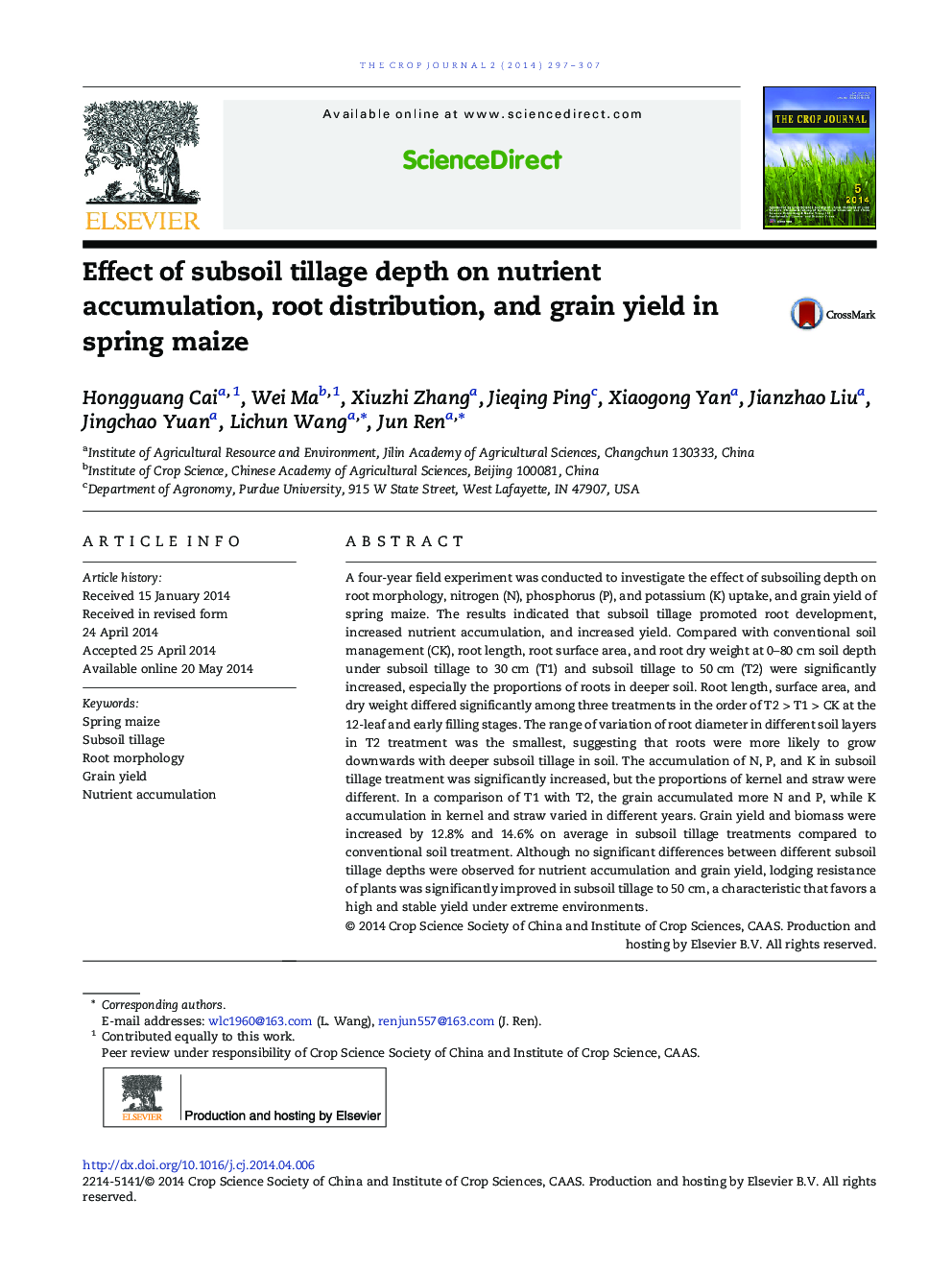| Article ID | Journal | Published Year | Pages | File Type |
|---|---|---|---|---|
| 2079512 | The Crop Journal | 2014 | 11 Pages |
A four-year field experiment was conducted to investigate the effect of subsoiling depth on root morphology, nitrogen (N), phosphorus (P), and potassium (K) uptake, and grain yield of spring maize. The results indicated that subsoil tillage promoted root development, increased nutrient accumulation, and increased yield. Compared with conventional soil management (CK), root length, root surface area, and root dry weight at 0–80 cm soil depth under subsoil tillage to 30 cm (T1) and subsoil tillage to 50 cm (T2) were significantly increased, especially the proportions of roots in deeper soil. Root length, surface area, and dry weight differed significantly among three treatments in the order of T2 > T1 > CK at the 12-leaf and early filling stages. The range of variation of root diameter in different soil layers in T2 treatment was the smallest, suggesting that roots were more likely to grow downwards with deeper subsoil tillage in soil. The accumulation of N, P, and K in subsoil tillage treatment was significantly increased, but the proportions of kernel and straw were different. In a comparison of T1 with T2, the grain accumulated more N and P, while K accumulation in kernel and straw varied in different years. Grain yield and biomass were increased by 12.8% and 14.6% on average in subsoil tillage treatments compared to conventional soil treatment. Although no significant differences between different subsoil tillage depths were observed for nutrient accumulation and grain yield, lodging resistance of plants was significantly improved in subsoil tillage to 50 cm, a characteristic that favors a high and stable yield under extreme environments.
